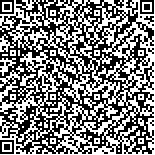池林,李红玲,赵龙,庞亚涛.经颅直流电刺激对意识障碍患者恢复的影响[J].中华物理医学与康复杂志,2018,40(9):652-656
扫码阅读全文

|
| 经颅直流电刺激对意识障碍患者恢复的影响 |
|
| |
| DOI: |
| 中文关键词: 经颅直流电刺激 意识障碍 康复 植物状态 最小意识状态 |
| 英文关键词: Transcranial direct current stimulation Disorders of consciousness Rehabilitation Vegetative state Minimally conscious state |
| 基金项目: |
|
| 摘要点击次数: 5956 |
| 全文下载次数: 7206 |
| 中文摘要: |
| 目的 探讨经颅直流电刺激(tDCS)对意识障碍(DOC)患者恢复的影响。 方法 采用随机数字表法将38例DOC患者分为观察组和对照组,每组19例。2组患者均给予常规康复干预,观察组患者在此基础上行tDCS治疗,采用7cm×5cm的等渗盐水明胶海绵电极于患者左前额叶背外侧行阳极刺激,阴极刺激位于右眼眶或右肩上,刺激强度为2mA,治疗时间每次20min,每日1次,每周6次,20次为1个疗程,共治疗1个疗程。采用脑干听觉诱发电位(BAEP)、上肢体感诱发电位(USEP)、脑电图(EEG)及格拉斯哥量表(GCS)和持续植物状态(PVS)评分分别于治疗前、后进行评估。 结果 治疗前,2组患者GCS、PVS、EEG、BAEP、USEP评分比较,差异无统计学意义(P>0.05)。治疗后,2组患者GCS、PVS、EEG、BAEP、USEP评分均较组内治疗前改善,且且观察组患者评分优于对照组(P<0.05)。临床疗效评估中,观察组总有效率为89.47%,显著有效率为78.95%,对照组总有效率为84.21%,显著有效率为42.11%,2组比较,差异有统计学意义(P<0.05)。 结论 常规康复治疗可改善DOC患者的BAEP、USEP、EEG、GCS、PVS评分,在常规康复治疗的基础上辅以tDCS治疗的联合干预方案效果更优。 |
| 英文摘要: |
| Objective To assess the clinical efficacy of transcranial direct current stimulation (tDCS) in improving consciousness in patients with severe disorders of consciousness. Methods Thirty-eight patients with disorders of consciousness were divided into an observation group and a control group according to a random number table, each of 19. Both groups received conventional rehabilitation therapy, while the observation group was additionally provided with tDCS at the intensity of 2 mA for 20 minutes per day, 6 days per week, for 20 times, with the anodal electrode ( isotonic saline gelatin sponge, 7 cm×5 cm) placed over the left dorsolateral prefrontal cortex and the cathodal stimulation over the right eye socket or right shoulder. The patients were evaluated with brainstem auditory evoked potential (BAEP), upper limb somatosensory evoked potential (USEP), electroencephalogram (EEG) and Glasgow coma scale (GCS) and persistent vegetative state (PVS) scores before and after the treatment. Results There were no significant differences between the two groups with regard to BAEP, USEP, EEG, GCS and PVS scores (P>0.05). After the treatment, significant improvement was observed in all the measurements, with those of the observation group superior to the control group (P<0.05). In the evaluation of clinical efficacy, the total effective rate and the significant effective rate of the observation group was 89.47% and 78.95%, respectively, significantly higher than those of the control group (84.21% and 42.11% ) (P<0.05). Conclusions Conventional rehabilitation treatment can improve the BAEP, USEP, EEG, GCS and PVS scores of patients with severe disorders of consciousness, and the addition of tDCS on the basis of conventional rehabilitation treatment is more effective. |
|
查看全文
查看/发表评论 下载PDF阅读器 |
| 关闭 |
|
|
|